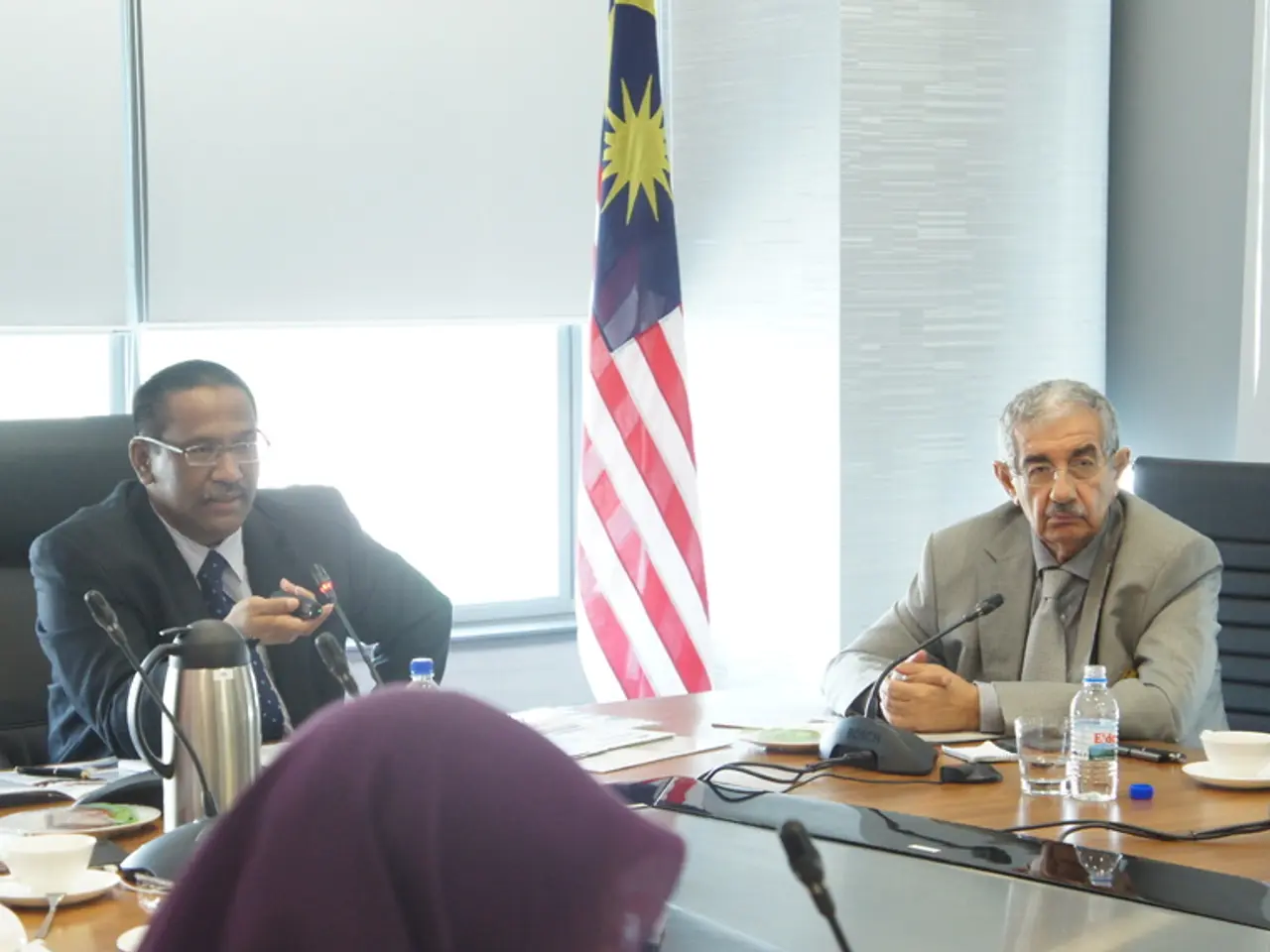Emirati women traditionally utilized distinct hues of burqa'a to denote various life phases.
The Emirati Burqa'a, a traditional face covering worn by Emirati women, is a symbol of modesty, social status, and protection from the harsh desert environment. This decorative, stiffened cloth mask covers part of the face, typically the nose and eyebrows, and sometimes the mouth, while leaving the eyes uncovered [1].
Historically, the burqa'a has its roots in Middle Eastern female dress traditions predating Islam, influenced by Persian, Syrian, and Anatolian customs. While the Quran provides guidance on modest dress, it does not impose strict rulings on face veiling, so practices vary by region and period [1].
In the UAE and parts of the Gulf, the burqa'a is a vital part of Emirati heritage rather than a religious symbol [5]. It once enabled women to work outdoors modestly, navigate social rules, and mark the transition from girlhood to womanhood [3]. Regional variations emerged over time, such as older women choosing smaller eye openings to conceal wrinkles or missing teeth, and colours like metallic gold-green and purple reflecting age and status [4].
In modern times, the use of the burqa'a has evolved from everyday practical attire to a cultural heritage symbol [5]. Many Emirati women do not wear the burqa’a daily but instead regard it as a cultural artifact and symbol of national identity. It is often seen in traditional events, performances, and heritage celebrations, rather than as a compulsory garment [5].
Elderly Emirati women like Maryam Salem and Zaafarana Ahmed Khamis continue to wear the burqa'a, honouring a tradition that speaks to the identity and resilience of Emirati women [6][7]. For Salem, the burqa'a is a piece of her identity [8]. In the past, brides traditionally received smaller, married-women styles of burqa'a in their trousseau [2].
Today, younger women prefer the hijab, niqab, or ghashwa over the burqa'a [9]. Aisha Ali Al-Blooshi predicts that the burqa'a will survive only as a ceremonial or fashionable accessory for future generations [10]. Visual artist Karima Al Shomely uses the traditional Emirati burqa'a in modern artistic productions as part of her creative work [11].
Azza Al Ali, a reporter from Ras Al Khaimah, is dedicated to sharing stories that bring the community's voices to life [12]. Passionate about connecting with people and highlighting what truly matters to them, Al Ali's work reflects the evolving role of the burqa'a in Emirati society and culture [12].
References: 1. Emirati Traditional Clothing 2. The Evolution of the Burqa'a in the UAE 3. The Burqa'a: A Symbol of Emirati Heritage 4. Regional Variations in Emirati Burqa'a Design 5. The Changing Role of the Burqa'a in Emirati Society 6. Elderly Emirati Women Continue to Wear the Burqa'a 7. Zaafarana Ahmed Khamis and the Burqa'a Tradition 8. Maryam Salem and the Burqa'a: A Piece of Her Identity 9. Younger Women Prefer the Hijab, Niqab, or Ghashwa over the Burqa'a 10. Aisha Ali Al-Blooshi on the Future of the Burqa'a 11. Karima Al Shomely and the Emirati Burqa'a in Art 12. Azza Al Ali: Sharing Stories of the Community
- The Emirati Burqa'a, a symbol of modesty, social status, and protection, originates from Middle Eastern female dress traditions, influenced by various customs before the emergence of Islam.
- In the UAE and parts of the Gulf, the Burqa'a serves as a vital part of Emirati heritage, rather than a religious symbol.
- Regional variations in the design of the Emirati Burqa'a have emerged over time, reflecting age and status, such as colors like metallic gold-green and purple.
- In modern times, the use of the Burqa'a has evolved from everyday practical attire to a cultural heritage symbol, and it is often seen in traditional events, performances, and heritage celebrations.
- Aisha Ali Al-Blooshi predicts that the Burqa'a will survive only as a ceremonial or fashionable accessory for future generations, with younger women opting for the hijab, niqab, or ghashwa instead.
- Visual artist Karima Al Shomely incorporates the traditional Emirati Burqa'a into modern artistic productions, showcasing its cultural significance.
- Azza Al Ali, a reporter dedicated to sharing the community's voices, reflects on the evolving role of the Burqa'a in Emirati society and culture through her work.




